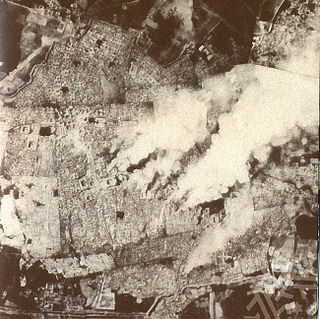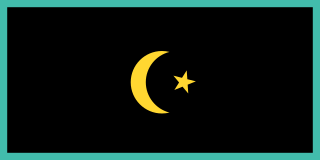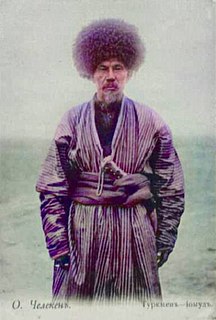Related Research Articles

The Great Game was a political and diplomatic confrontation that existed for most of the 19th century and beginning of the 20th century between the British Empire and the Russian Empire over Afghanistan and neighbouring territories in Central and South Asia, and having direct consequences in Persia and British India.

The Basmachi movement was an uprising against Russian Imperial and Soviet rule by the Muslim peoples of Central Asia.

The Khanate of Khiva was a Central Asian polity that existed in the historical region of Khwarezm in Central Asia from 1511 to 1920, except for a period of Afsharid occupation by Nader Shah between 1740 and 1746. Centred in the irrigated plains of the lower Amu Darya, south of the Aral Sea, with the capital in the city of Khiva, the country was ruled by a Turco-Mongol tribe, the Khongirads, who came from Astrakhan. It covered present western Uzbekistan, southwestern Kazakhstan and much of Turkmenistan before Russian arrival at the second half of the 19th century.
Prince Alexander Bekovich-Cherkassky, born Devlet-Girei-mırza, was a Russian officer of Circassian origin who led the first Russian military expedition into Central Asia.
The Young Bukharans or Mladobukharans were a secret society founded in Bukhara in 1909, which was part of the jadidist movement seeking to reform and modernize Central Asia along Western-scientific lines.

The Andijan uprising of 1898(Kyrgyz: Анжияндагы көтөрүлүш) was a nationalist rebellion which occurred on 29 May [O.S. 17 May] 1898. Around 1500 armed men attacked the Russian forces at Andijan, under the direction of the Naqshbandi Sufi sheikh "Dukchi Ishan" (1856–1898). The attack saw the rebels surround the camp, taking the soldiers of the 20th Russian battalion by complete surprise. However, the Russian troops quickly regrouped and managed to rout the rebels. The uprising lasted about 15 minutes.
The major modern Turkmen tribes are Teke, Yomut, Ersari, Chowdur, Gokleng and Saryk. The most numerous are the Teke.

The Yomut or Yomud is a Turkmen tribe that lives in Western and Central Asia, including Gorgan, Iran; Turkmenbashi, Turkmenistan; the eastern Caspian shores; Khiva, Uzbekistan; and Dashoguz, Turkmenistan.

Iranian Turkmens are a branch of Turkmen people living mainly in northern and northeastern regions of Iran. Their region is called Turkmen Sahra and includes substantial parts of Golestan Province of Iran.

In the Russo–Khivan War of 1873, Russia conquered the Khanate of Khiva, and it became a Russian protectorate.

The conquest of Central Asia by the Russian Empire took place in the second half of the nineteenth century. The land that became Russian Turkestan and later Soviet Central Asia is now divided between Kazakhstan in the north, Uzbekistan across the center, Kyrgyzstan in the east, Tajikistan in the southeast and Turkmenistan in the southwest. The area was called Turkestan because most of its inhabitants spoke Turkic languages with the exception of Tajikistan, which speaks an Iranian language.
The Russo–Khivan War of 1839–1840 was a failed Russian attempt to conquer the Khanate of Khiva. Vasily Perovsky set out from Orenburg with 5,000 men, met an unusually cold winter, lost most of his camels, and was forced to turn back after going halfway.
The Central Asian revolt of 1916, also known as the Semirechye Revolt and as Urkun in Kazakhstan and Kyrgyzstan, was an anti-Russian uprising by the indigenous inhabitants of Russian Turkestan sparked by the conscription of Muslims into the Russian military for service on the Eastern Front during World War I. The rampant corruption of the Russian colonial regime and Tsarist colonialism in all its economic, political, religious, and national dimensions are all seen as the contributing causes.
The Khivan Revolution refers to the events of 1917–1924 in the Khanate of Khiva, which led to the liquidation of the Khanate in Khiva, the establishment of the Khorezm People's Soviet Republic, and the subsequent inclusion of the republic into the USSR through national disengagement and the formation of the Uzbek SSR and the Turkmen SSR in 1924.
The Turkoman Revolt of 1912–1913 was a revolt by Yomud Turkomans against the Khanate of Khiva. Its causes laid in opposition to the taxation reforms of Isfandiyar Jurji Bahadur, which had resulted in the doubling or tripling of the amount of taxes the Yomud Turkomans needed to pay. It began on 12 December 1912 when rebels attacked and plundered a caravan heading from Tashauz to Takhta. After the revolt broke out, the Khivan government was split between pro-compromise and pro-war parties, of which the latter prevailed. The subsequent punitive expedition faced resistance from 300-500 rebel fighters led by Shammi-kel, who occupied a strongly fortified defensive position between Takhta and Ilyali and held the government forces off for 20 days. A Russian force under Colonel Lykoshin was then dispatched to Khiva to aid the government by providing munitions. Although his forces had not been defeated, Russia's support for Isfandiyar convinced Shammi-kel to seek peace with the government. In the peace agreement of 25 January 1913, mediated by Colonel Lykoshin, the Khivan government agreed to rescind the tax reforms, while the rebels agreed to pay 110,000 tillas to the Khivan government.

Isfandiyar Khan, or Asfandiyar Khan, born Isfandiyar Jurji Bahadur, was the Khan of Khiva between September 1910 and 1 October 1918, the 53rd Khan of Khiva, and the 12th Khongirad ruler of the Uzbeks. He was overthrown and executed by Junaid Khan in 1918.

Seyid Islam Khodja was the Grand Vizier of the Khiva Khanate from 1898 until his death in 1913.

Junaid Khan was a military commander from the Turkmen Yomud tribe who was the (last) de facto ruler of the State of Khorezm from 1918 to 1920, Chief of the Armed Forces (Serdar-Kerim) of Khorezm during the tumultuous years after the Russian October Revolution.
The Qajar Principality of Merv was an independent principality that existed in Central Asia from c.1747 to 1788. It was ruled by the 'Izz al-Dinlu clan of the Qajars of Merv, who had been governors of the oasis since Safavid times. It gained its' independence after the death of Nader Shah in 1747 and had good relations with the ruler of Bukhara, Daniyal Biy. When his son, Shah Murad took over in 1785, he launched a campaign that killed the ruler of the principality, Bayram 'Ali Khan Qajar. By 1788 the entire oasis was conquered and annexed to Bukhara. The last ruler, Mohammad Husayn Khan, fled to Iran.
References
- 1 2 3 Becker, Seymour (2004-08-02). Russia's Protectorates in Central Asia: Bukhara and Khiva, 1865-1924. Routledge. pp. 181, 182, 183. ISBN 9781134335831.
- ↑ Sokol, Edward Dennis (2016). The Revolt of 1916 in Russian Central Asia. JHU Press. p. 136. ISBN 978-1-4214-2050-9.